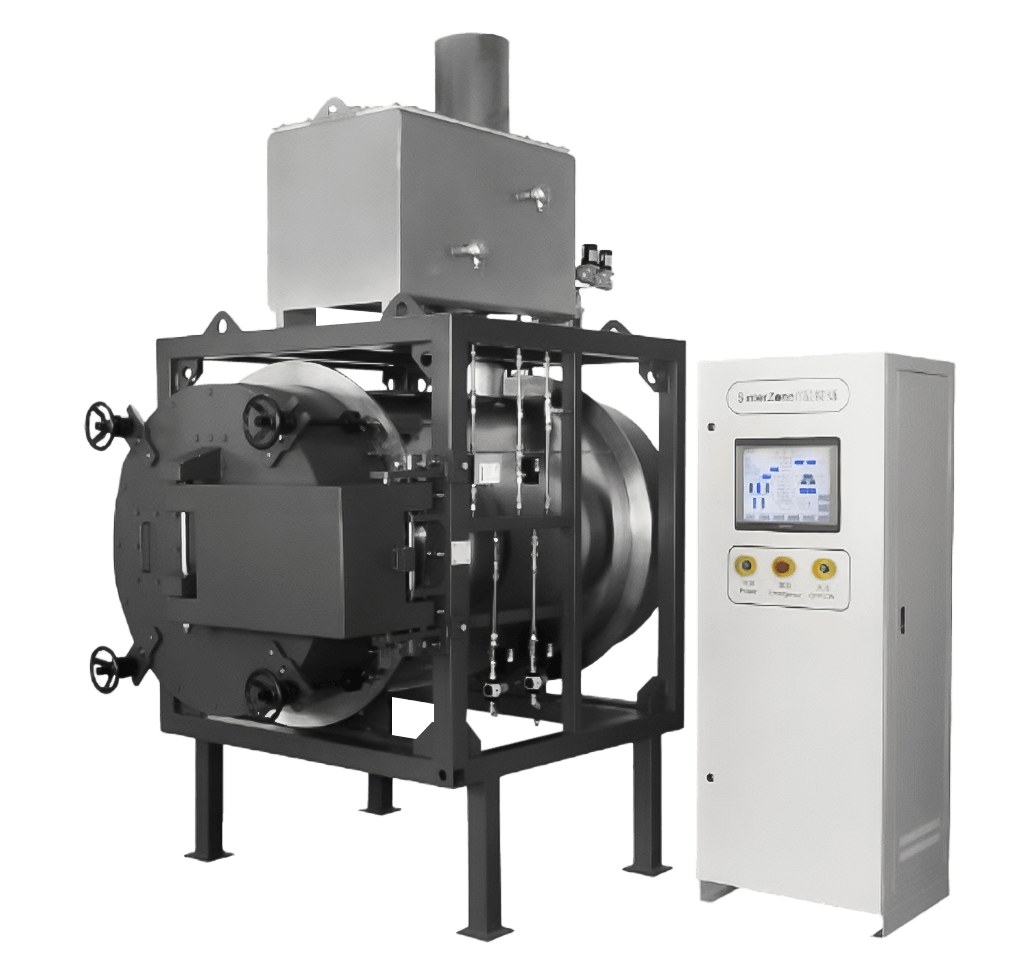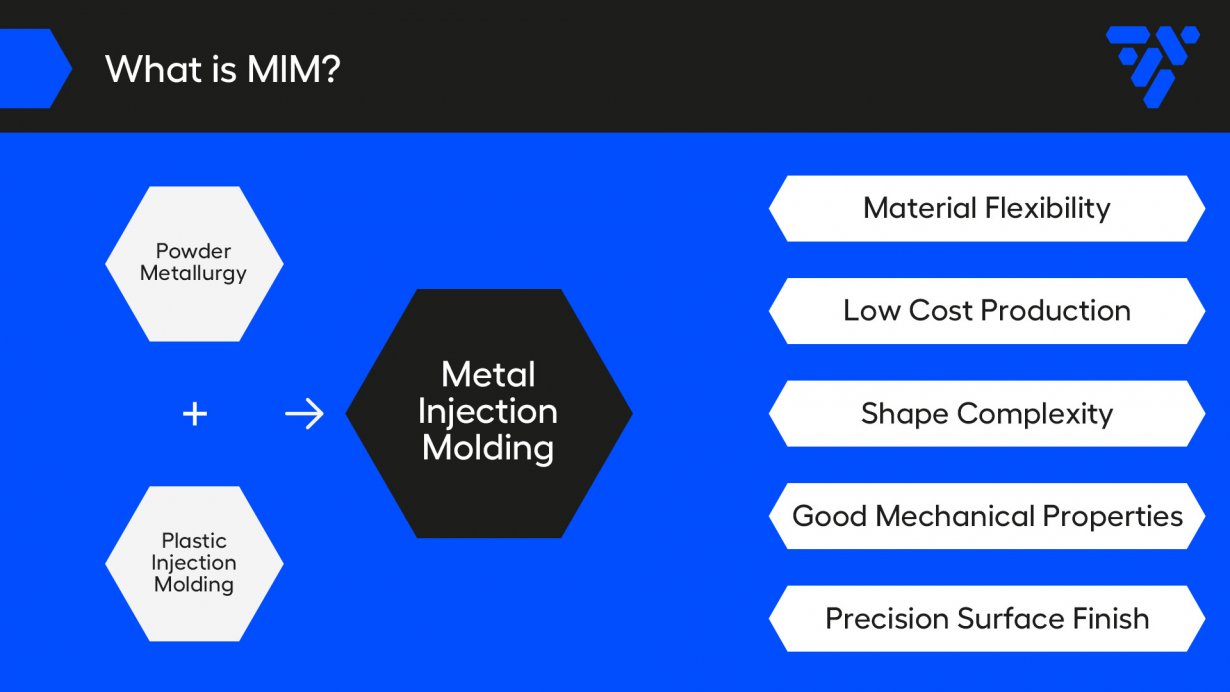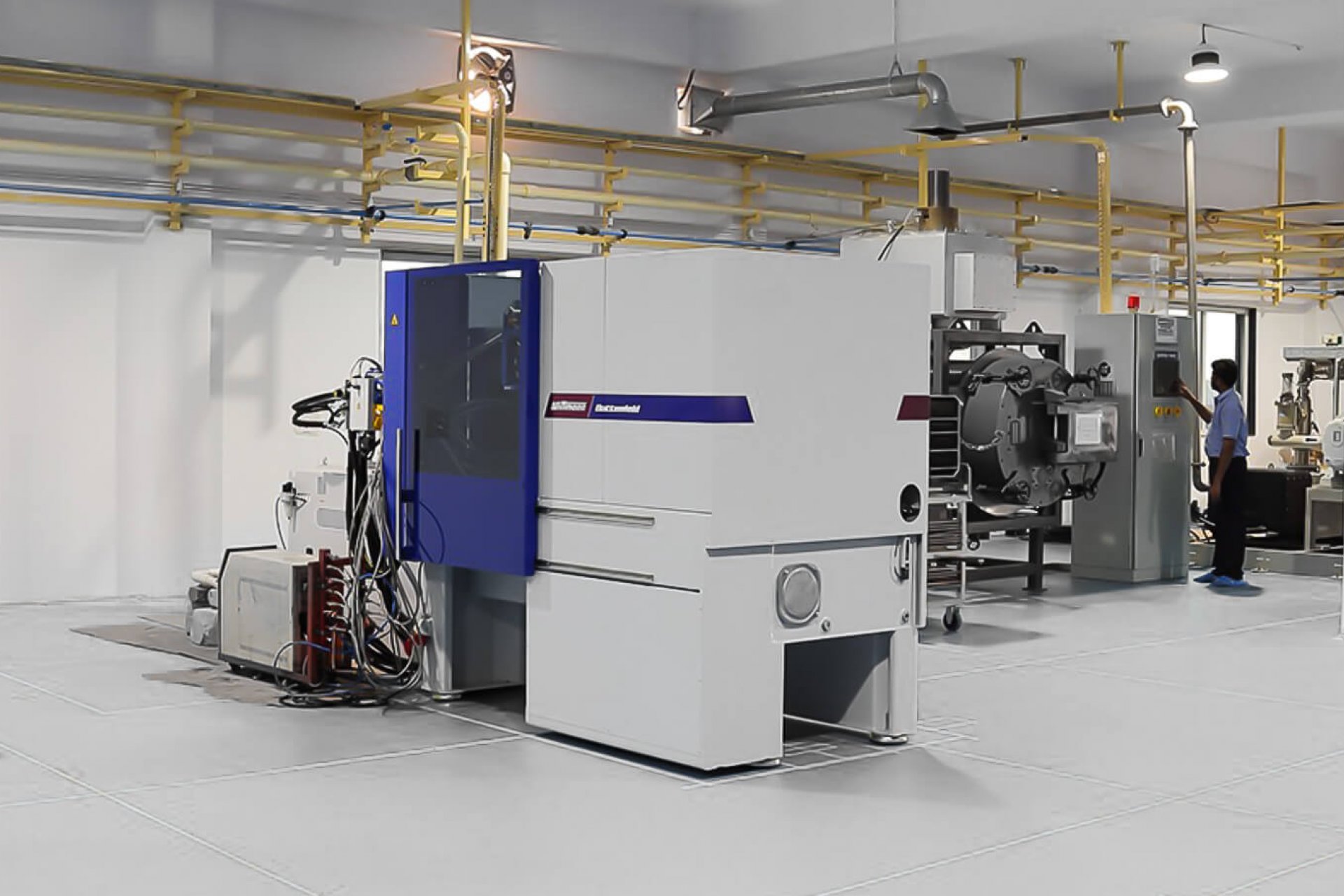Metal Injection Molding
A Versatile Manufacturing Process
Metal Injection Molding (MIM) is a versatile manufacturing process that combines the design flexibility of plastic injection molding with the strength and precision of metal parts.
MIM allows for the production of complex, high-precision parts with tight tolerances and fine details. The process involves mixing metal powder with a polymer binder to form a "feedstock", which is then injection molded into a desired shape. The molded parts are then debound, sintered, and finished to achieve the desired tolerances & properties. MIM can be used to produce a wide range of parts, including automotive, surgical tools & medical device components, consumer electronics, and industrial, defense and aerospace components.
Precision
Versatility
Efficiency
Durability

Metal Injection Molding
A Cost-Effective Solution
Metal Injection Molding (MIM) is a manufacturing process that combines the design flexibility of plastic injection molding with the strength and precision of metal parts. By leveraging advanced molding techniques and material efficiency, MIM offers significant cost savings compared to traditional manufacturing methods.

The process involves mixing metal powder with a polymer binder to form a "feedstock" material, which is then injection molded into a desired shape.
The molded parts are then debound, sintered, and finished to achieve the desired properties. One of the key advantages of MIM is that it allows for the production of complex, high-precision parts with tight tolerances and fine details. This makes it well-suited for a wide range of applications, including automotive, surgical tools & medical device components, consumer electronics, industrial, defense and aerospace components. As the complexity of the component increases and quantity increases, MIM becomes a cost-effective solution.
The debinding process involves removing the polymer binder from the molded parts, leaving behind a porous structure. This structure is then sintered, which involves heating the parts to a high temperature in a controlled atmosphere to cause the metal particles to fuse together and achieve the desired density and mechanical properties. The sintered parts are then finished to achieve the desired surface finish. MIM can be used to produce parts from a wide range of metal alloys, including stainless steels, tool steels, titanium, cobalt chrome and more. A wide range of post-sintering operations such as heat treatment, turning, milling grinding, lapping, and polishing can be applied on MIM parts to reach the desired dimensions and surface finish.
